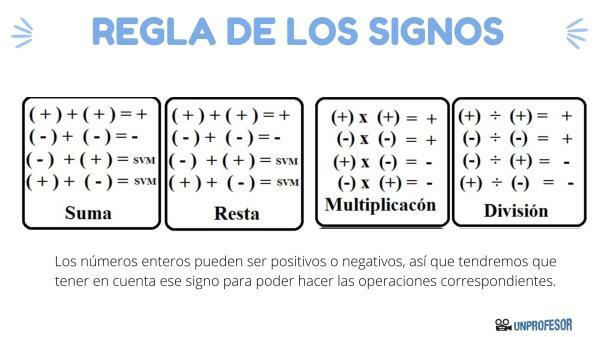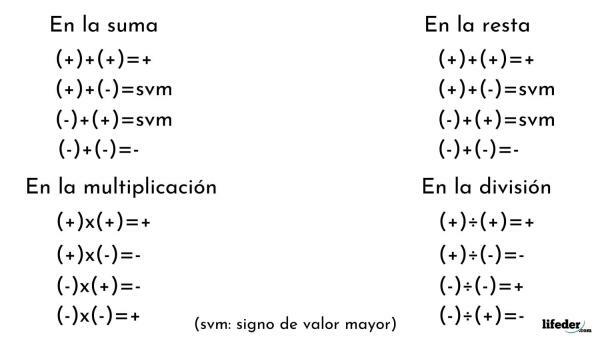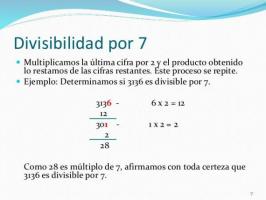What is the RULE of SIGNS

In this math lesson from a Teacher we are going to learn what is the rule of signs in integers according to the operations we can do with them. In this way, we will see addition, subtraction, multiplication and division. At the end of the lesson you will be able to practice what you have learned with a exercises and their respective solutions.
Before talking about the rule of signs, we are going to know what the integer numbers. They are all those numbers included in the natural numbers plus negatives and the number zero, so some examples are:
-1, -2, -3, -4; 1, 2, 3, 4, 0...
They identify with the letter Z and they are an infinite set of numbers with which we can always add, subtract and multiply, but not always divide.
As we already know, the integers They can be positive or negative, so we will have to take that sign into account to be able to do the corresponding operations.
Specifically, to add or subtract, we will have to take into account the following rules:
The signs for the sum
- If both are positive, we add the numbers and they stay positive. Example: (+2) + (+4) = +6
- If one is positive and the other is negative, we subtract the largest minus the smallest and leave the sign of the largest. Example: (+2) + (-4) = -2
- If both are negative, we add the numbers, but keep the negative sign. Example: (-2) + (-4) = -6
Sign rule for subtraction
- If both are positive, the one after the subtraction will become negative, so now we will have a positive number and a negative number, so we subtract the largest minus the smallest and leave the sign of the higher. Example: (+2) - (+4) = +2 -4 = -2
- If the first is positive and the second is negative, the second will become positive and we will have two positive numbers that we will add and we will have a positive result. Example: (+2) - (-4) = +2 +4 = +6
- If the first one is negative and the second one is positive, the second one will become negative and then we will add both numbers and the result will be negative. Example: (-2) - (+4) = -2 -4 = -6
- If both are negative, the one after the subtraction will become positive and then what we will do is subtract the greater minus the lesser and we will leave the sign of the greater. Example: (-2) - (-4) = -2 +4 = +2

Image: Lifeder
Put into practice what you learned in this lesson with the following activities, of which you will find the solution below:
1) Calculate the following addition and subtraction:
- (+5) + (+3)
- (+7) + (-4)
- (-9) + (-1)
- (+5) - (+3)
- (+7) - (-4)
- (-7) - (+4)
- (-9) - (-1)
2) Calculate the following multiplications and divisions:
- (+60): (-6)
- (-9) x (-2)
- (+6) x (-3)
- (+25): (+5)
- (-40): (-8)
1) Calculate the following addition and subtraction:
- (+5) + (+3) = +8
- (+7) + (-4) = +3
- (-9) + (-1) = -10
- (+5) - (+3) = +2
- (+7) - (-4) = +11
- (-7) - (+4) = -11
- (-9) - (-1) = -8
2) Calculate the following multiplications and divisions:
- (+60): (-6) = -10
- (-9) x (-2) = +18
- (+6) x (-3) = -18
- (+25): (+5) = 5
- (-40): (-8) = +5
If you found this lesson useful, don't forget to share it with your classmates.


